
We have all been sat on an airplane when all of a sudden the pilot turns on the ‘Seat Belt’ light and comes over the passenger address system to advise us of possible upcoming turbulence. The question is though, how do they know there is turbulence ahead? We can’t see it like we can an approaching rainstorm, so how do they when turbulence is coming?
Pilots have to predict the location of turbulence so they use a combination of their experience, looking at the weather ahead, an aircraft-mounted weather radar, weather reports, satellite images, and by far the most accurate; reports from other pilots who have just experienced any turbulence.
Although flying through turbulence can be a scary experience for a passenger it’s not as dangerous as you might think. Turbulence is just a normal part of flying and there are various ways by which pilots can foresee turbulence and can mitigate its effects on the aircraft.
Air turbulence is a phenomenon that happens when the air around an aircraft becomes unstable, and the airflow and pressure change rapidly. This can happen due to wind, weather conditions, terrain, or even the presence of other aircraft in the vicinity. The result is unpredictable movement and changes in the altitude and attitude of the aircraft.
Because of these sudden, rapid, and unannounced changes in the aircraft, can cause discomfort to the passengers and crew, and depending on its timing can make flying difficult for the pilots.
The effects of turbulence depend on how severe it is. The more severe the turbulence is, the more likely it will cause physical discomfort to passengers and crew members. Light turbulence may only make you feel like you’re floating in your seat while heavy turbulence can make you feel like you’re being tossed around like a rag doll inside the cabin.
However, pilots are experienced in handling such turbulence, the aircraft are designed to handle way more turbulence than experienced so all the pilots have to do is to try to fly the aircraft out of the turbulent zone as quickly as possible or not even fly into it in the first place.
What Do Pilots Use To Predict Turbulence?
To predict turbulence pilot, use some or all of the following methods:
- Aircraft Weather Radar
- Ground-Based Weather Station Reports
- Pre-Flight Briefings
- PIREPs
- Reporting Software
- Imagery and Overlays
Depending on the sophistication of the aircraft, the pilot may not have the luxury of some of these tools in the cockpit so they have to try and predict and plan the flight as best as possible while on the ground.
For pilots flying in small aircraft, especially for pleasure, the entire flight may be canceled due to extensive storm activity in the area. Large airplanes are much better suited to handle turbulence as they have better means to detect turbulence but also have the means to fly around or above the weather cell.
For those of us that fly close to the earth’s surface, being on the ground is far better than being in the air wishing you were on the ground! – Trust Me! I made that mistake only once very early in my career!
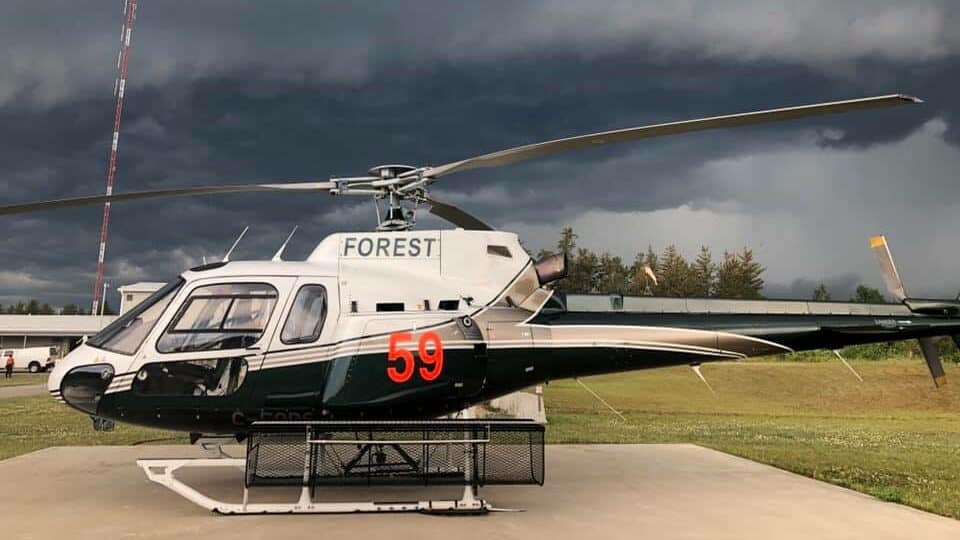

Join My Newsletter & Get Great Tips, Information and Experiences To Help You Become a Superb Pilot!
Aircraft Weather Radar
Most modern large passenger aircraft have a variety of equipment and instruments to assess the weather conditions around the aircraft. Aircraft radar is one of the primary tools pilots will use while airborne as it can provide a wealth of weather information, including wind speed and direction, precipitation levels and types, pressure readings, and much more, depending on the system’s level of sophistication.
This data is invaluable for the pilot/s to help in making informed decisions while flying through or approaching inclement weather.
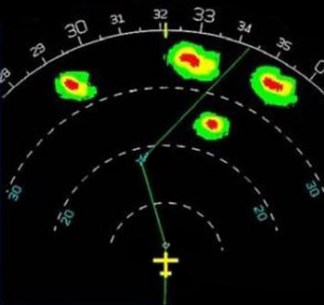
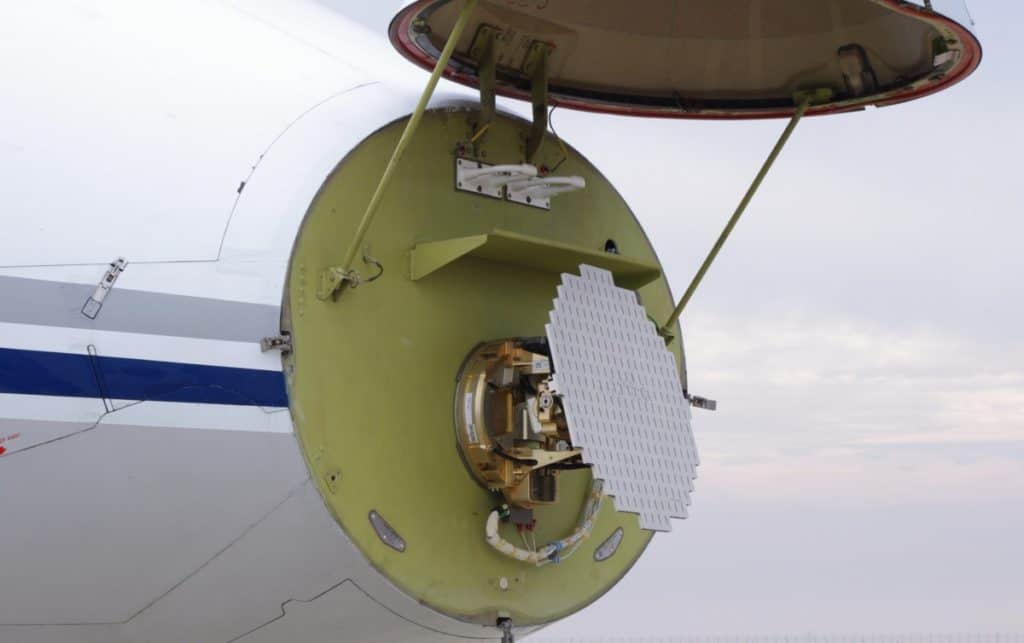
Aircraft weather radar uses Super High-Frequency radio waves using 1-microsecond pulses. They are transmitted in the forward direction from a radar antenna which is installed in the nose cone of the aircraft.
The radar antenna is mounted on gimbals and positioned by the inertial reference system (IRS) to adjust automatically with the shift in aircraft attitude and direction. The pilot can also change the sweep and angle of the signal beam so that the radar is directed correctly at the weather target.
The transceiver of the radar switches the antenna to transmit and receive signal pulses at a high frequency. This cycle repeats continuously and the radar receiver unit maps a two-dimensional visual image on a display screen in the cockpit about the weather conditions ahead.
The weather radar picks up the density of precipitation. Green is the weakest and red is the strongest. This picture allows the pilot to see where the cells containing the strongest rainfall are. Strong rainfall is usually associated with thunderstorms which are known to have incredibly strong turbulence around and within them.
Pilots can navigate their way around and between the cells as seen in the radar image above.
Learn More…
Try These Articles:
* Aviation Weather Information: How do Pilots Get It?
* Flying Into The Sun – How Do Pilots Deal With It?
Ground Weather Stations
As the aircraft flies on its route, there are dozens of ground weather stations situated along their route. Some stations are equipped with radar and other metrological sensors to collect weather information in the area. This information is transmitted to the pilot through voice and data communication systems.
Based on this data, weather forecasters and software can report real-time and forecasted weather so pilots can get a good estimate if they are going to encounter turbulence in their flight path.
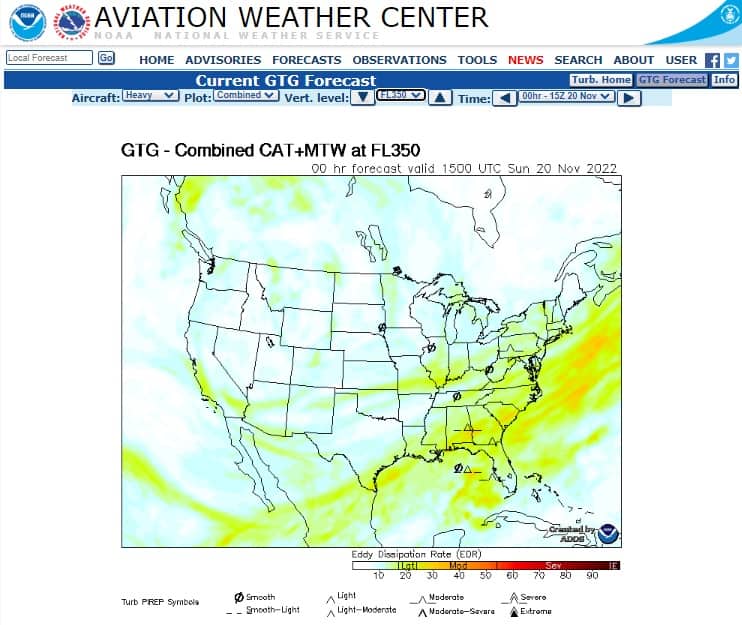
For those of us that don’t have the luxury of real-time imagery in the cockpit, we have to look at the applicable weather reports before lift-off and make a decision as to the routing or not go at all. This is called pre-flight planning and is a big part of a flight being successful.
Pre-flight Briefing
A pre-flight briefing is a required safety protocol that takes place before the takeoff of any aircraft. The pilot is informed about the weather conditions that the aircraft may encounter in its flight path and weather conditions both at the departure and destination airport.
The pilot will then brief the rest of the crew as to if and when they expect turbulence so the cabin crew can ensure they are not in the middle of serving drinks or meals at the time of the forecasted turbulence.
PIREPS
A Pilot Report (PIREP) is information on meteorological phenomena encountered by a pilot in flight. These reports are passed on to other pilots and air traffic control when a pilot experiences something that others should be aware of, or to provide warnings to other pilots flying in the same vicinity.
All pilots are encouraged to give PIREPs when their aircraft encounters unusual or sudden severe weather conditions.
Examples of a PIREP could be:
- When weather conditions on an IFR approach differ from the latest observation
- A pilot detects wind shear, especially during take-offs and landings
- A pilot experiences unforecast Clear Air Turbulence (More on this later)
- etc
PIREPS can contain information on any number of factors that may affect a flight such as snow, icing, hail, severe turbulence, dust, fog, wind shear, and clear air turbulence, and are by far the most accurate of all because they are timely reports from pilots who have just experienced it.
IATA Turbulence Aware
In 2018, the International Air Transport Association (IATA), the trade association of commercial airlines, established a turbulence early warning network called Turbulence Aware.
It is an international, worldwide data exchange program. Turbulence Aware receives the existing weather data from participating airlines, performs its quality checks, anonymizes it, and provides the data back to all airlines.
This then allows the airline’s route planners to adjust routes before flight or allows pilots to alter their plan during flight.
Satellite Weather Overlays
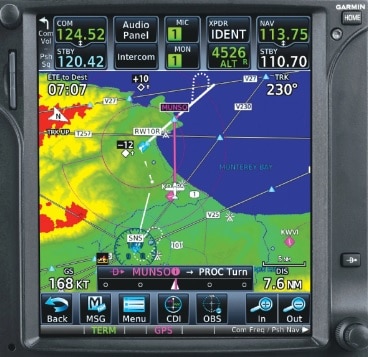
For pilots of small and private aircraft, they are now able to get real-time weather data overlaid onto their cockpit navigation displays.
With a subscription to Sirius or XM Satellite and using an compatible aircraft avionics display the pilot can see the weather around them.
Information like this then allows the pilots to make timely decisions about where they suspect turbulence to be and adjust their route accordingly.
What is Clear Air Turbulence?
Clear Air Turbulence (CAT) is an erratic movement of air in a cloudless sky. Pilots are unable to see it which when encountered can violently shake the aircraft causing discomfort and hazards to occupants unbuckled from their seats. Most Clear Air Turbulence happens between 20,000 feet – 45,000 feet.
Clear Air Turbulence (CAT) is one of the most dangerous types of weather conditions because it happens without warning, is unpredictable, but luckily in most cases lasts only for a short period.
CAT has become a very serious operational factor in flight operations at all levels and especially in jet traffic flying over 15,000 feet. Normally in such cases, the weather appears clear without any clouds, rain, or snow, so the weather radar may not detect them and the pilots are often the most reliable source of CAT warnings received as PIREPs.
CAT conditions must be reported by pilots if they encounter them. They are required to log the time and location, and it is sent to an FAA-approved ground station with which they are in radio contact to help other pilots following either prepare or alter their route.
Learn More…
Try These Articles:
* How Do Pilots See in Clouds? A Pilot Tells All!
* Birds: How Do Pilots Avoid Them?


